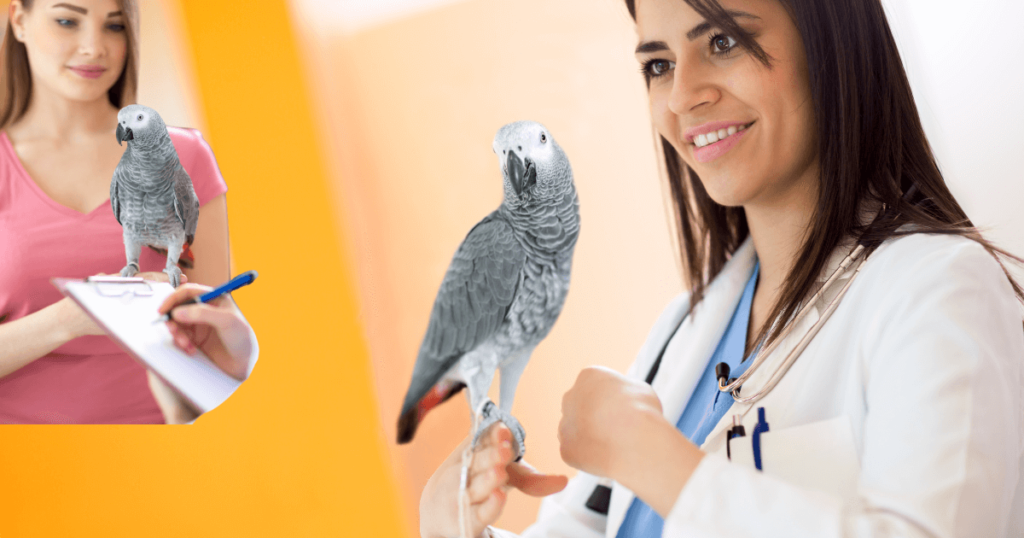Our feathered friends’ wellbeing and lifespan are greatly influenced by Avian health, bird care, and avian veterinary medicine. Birds are fascinating animals with distinctive behaviors, skeletons, and health requirements. In order to provide the best care, identify and cure diseases, and avoid health problems in birds, it is crucial to have a thorough understanding of avian health. We will explore numerous facets of avian health in this extensive manual, such as bird behavior, anatomy, viral disorders, nutritional imbalances, and more. This article will offer insightful information and professional knowledge to help you better understand and care for your avian friends, whether you are a bird owner, an avian hobbyist, or a future avian veterinarian.
Table of Contents
Bird Care: A Fundamental Aspect of Avian Health
To preserve our avian companions’ welfare and health, proper bird care is essential. A secure and enriching environment, frequent veterinarian exams, and a thorough knowledge of bird behavior and anatomy are all necessary for their well-being.

Providing a Safe and Enriching Environment for Birds
In settings that resemble their natural habitats, birds thrive. It’s critical to provide children with a secure environment free of any dangers. This comprises:
- supplying a roomy, suitable-sized cage or aviary that enables natural mobility and flying.
- Making perches, toys, and cage accessories out of non-toxic materials.
- making sure there is adequate ventilation to avoid respiratory problems.
- preserving a healthy atmosphere free from dangerous pollutants.
A bird’s wellbeing also depends on providing them with stimulating toys, perches with different textures and sizes, and opportunities for mental and physical activity.
The Value of Routine Veterinary Exams for Birds
For monitoring bird health and identifying potential problems early on, routine veterinary examinations are essential. An experienced avian veterinarian will do a thorough checkup, which will include:
- Physical examination: determining the bird’s general health, the quality of its feathers, its weight, and the condition of its beak and nails.
- Blood work, fecal checks, and imaging procedures like X-rays or ultrasounds are some examples of diagnostic tests.
- Trimming of the beak and nails may be important on a regular basis because overgrown beaks or nails can be uncomfortable and pose health risks.
Exams by the veterinarian also offer a chance to talk about any issues or inquiries regarding the feeding, handling, or behavior of birds.
Knowing Bird Behavior to Provide Effective Care
Meeting birds’ social and emotional needs requires a thorough understanding of their behavior. Every species has particular needs and distinctive behavioral characteristics. Typical behavioral aspects to take into account include:
- Birds use a number of different vocalizations to exchange information. Addressing their needs and spotting symptoms of distress or disease can be made easier by understanding their significance.
- Birds communicate with their bodies to show their feelings and intentions. Understanding your bird’s body language will help you determine how it is feeling and how it is feeling emotionally.
- Many birds have a high level of social interaction and seek company. To make sure they are sufficiently stimulated and in good mental health, one should evaluate their social needs.
You can create a setting that supports birds’ natural tendencies and enhances their wellbeing by monitoring and understanding bird behavior.
A Closer Look at Avian Physiology in Bird Anatomy
For the purpose of identifying potential health problems and providing the necessary care, knowledge of bird anatomy is crucial. While there are some parallels between the anatomy of birds and other animals, each species of avian has its own distinctive characteristics.
- Feathers: The use of feathers in flight, insulation, and courtship displays is essential. To preserve their best health, they need routine maintenance and accurate assessment of their feather condition.
- Talons and beak: A bird’s talons and beak are essential for defense, climbing, and feeding. To avoid overgrowth, regular beak and nail trimming may be recommended.
- The respiratory system of birds is incredibly effective. They are equipped with air sacs that aid in effective oxygen exchange during flying.
Bird owners and avian veterinarians will be better able to recognize potential health problems and administer the necessary care if they have a basic awareness of avian anatomy.
Considering Feather Condition as a Measure of Bird Health
Monitoring of avian health must include evaluation of feather condition. The feathers of a bird are essential for flying, insulation, and defense. Poor feather condition may be a sign of underlying health problems or poor maintenance. Here are some important things to think about:
- Cleanliness of the feathers: The feathers must be tidy, devoid of debris, and thoroughly preened.
- Feather structure: Feathers must be whole and properly constructed, free of any damage or unnatural growth.
- Loss of feathers: Excessive feather loss or bald patches may be a sign of stress, poor food, or health issues.
- An indication of robust health is vibrant and uniform feather coloring. Discoloration or fading may be a sign of deeper problems.
Regularly checking and evaluating the state of your bird’s feathers will enable you to spot any anomalies and take the necessary action to address any potential health issues.
Conclusion:
We appreciate you reading Avian Health Part 1: A Comprehensive Guide to Bird Care and Veterinary Knowledge. We sincerely hope that this post has given you some useful tips for safeguarding the wellbeing of your feathery friends. Don’t forget to follow us for more enlightening articles and think about joining our newsletter to get frequent information on avian health and care. You’re well on your way to being an excellent bird carer with the knowledge you’ve learned from this guide, and your birds deserve nothing less.
Frequently Asked Questions
Why is proper bird care important?
Proper bird care is important to ensure the well-being and health of our avian companions. It includes providing a safe environment, regular veterinary check-ups, and understanding their behavior and anatomy.
How can I create a safe and enriching environment for birds?
To create a safe and enriching environment for birds, you should provide a spacious cage or aviary, use non-toxic materials for perches and toys, ensure proper ventilation, and keep the environment clean and free from harmful substances. Additionally, provide stimulating toys, perches of varying textures and sizes, and opportunities for mental and physical exercise.
Why are regular veterinary check-ups important for birds?
Regular veterinary check-ups are important for monitoring avian health and detecting potential issues early on. A qualified avian veterinarian can perform a comprehensive examination, including physical examination, diagnostic tests, and beak and nail trims.
How can I understand bird behavior for effective care?
Understanding bird behavior is crucial for meeting their social and emotional needs. Each species has unique behavioral patterns and requirements. Observing their vocalizations, body language, and social interaction can help provide an environment that promotes their well-being and supports their natural instincts.
What should I know about bird anatomy?
Understanding bird anatomy is essential for recognizing potential health issues and providing appropriate care. It includes knowledge about feathers, beak and talons, respiratory system, digestive system, and skeletal system.
How can I assess feather condition in birds?
Assessing feather condition is important for avian health monitoring. Feathers should be clean, intact, and well-formed. Excessive feather loss, abnormal growth, or changes in coloration may indicate underlying health issues.

